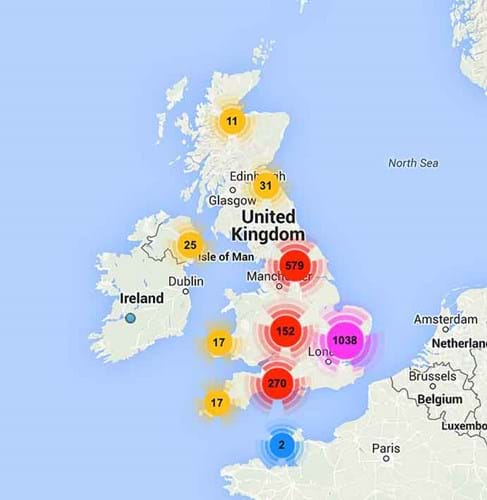
The first is an interactive map of Great Britain tracking the demographic changes of the trade over the century from 1900-2000. The second is a new Centre for the Study of the Art and Antiques Market.
Both form part of a long-term project to investigate the history, evolving nature and importance of the British antiques trade in the 20th century and its impact on the nation's economy.
ATG first reported on the 30-month project, a joint venture with Southampton University funded by the Arts and Humanities Research Council, in November 2013, when its leader, Dr Mark Westgarth, appealed for contributions from existing members of the trade as well as anyone who has memories, documents or images that could shed light on individual dealers, companies or other relevant activity for the period.
Eighteen months on, Dr Westgarth and his team are launching the website map with details of 2100 dealers, each data set showing where individual dealers would have been located at any one time during the 20th century.
Geographic Spread
A date slider at the bottom of the map allows users to view the changing geographic spread of the trade for any year during the century, highlighting the ebb and flow of trade centres across Britain and the importance of factors such as transport links and major sea ports.
"Around 7000 dealers a year started up or closed down during the century," said Dr Westgarth. "In all, we expect to build around 100,000 data sets to populate the map."
Additional functions allow users to trace individual antiques, such as pieces of furniture, as they changed hands over the years, showing how dealers altered their descriptions along the way, often reflecting the fashions of the time.
Again, the database of information for this function will continue to build over the years when it could move beyond its primary academic purpose to act as a due diligence tool for auction houses, dealers and loss adjusters, among other uses.
Sections focusing on the histories of individual dealers and collectors, supported by archival material such as letterheads, invoices and advertisements, will highlight other trends. For example, researchers should be able to identify when specialist dealers stopped calling themselves Old English Furniture dealers and adopted other titles to reflect new tastes and demand.
"We have around 2-3% of the data we eventually want to include uploaded on the site, so this is a work in progress," said Dr Westgarth, "but we are now opening it up as a crowd sourcing project so that other people can upload their information to the site."
Vetted Information
A team will verify new information, ensuring that every piece of data that goes live on the site is vetted and accurate.
"I have followed with great interest the progress that the university has been making with its study of the antiques trade in the 20th century," said Mark Dodgson, secretary general of the British Antique Dealers' Association.
"The concept of an interactive website charting the historical locations of antiques shops and the movement of beautiful objects from collectors to dealers and into museum collections should prove fascinating for anyone interested in the history of the decorative arts.
"The new interactive website will provide them with an excellent tool for checking where and when dealers were trading in the past, so adding to the information they can provide to antique collectors about their purchases."
The faculty's new Centre for the Study of the Art and Antiques Market will be another web-based resource with access to a number of dealer archives pledged to the University of Leeds' Brotherton Library. These include those of Phillips of Hitchin, Charles Lumb & Sons, and the Roger Warner archive. In all ten archives are under negotiation at the moment.
The centre will oversee an MA course on the art market, with fine art practice workshops. Three new PhD students will launch the centre's research programme with studies on Sèvres mania in the 19th century, Cypriot archaeology and its links to Leeds Museum collections, and secondhand cultures in fashion in the 1950s, which will look at the history of Portobello Market and other relevant trading centres.
"As well as teaching and practice, we are trying to build a sustainable centre for the study of the British art and antiques trade that will be here long after we have all gone," said Dr Westgarth.
He and his team are now applying for follow-on funding to the original £250,000 project.





